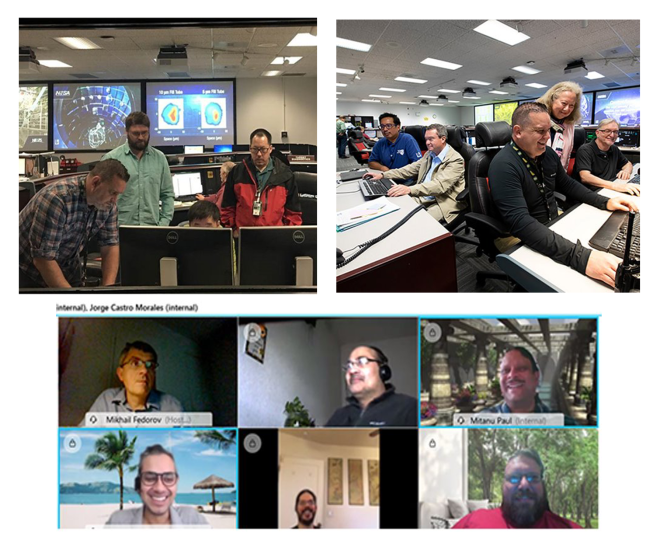COVID-19 and the subsequent move to a largely remote workforce necessitated significant changes in how to maintain and operate NIF, the world’s largest and most energetic laser. For example, NIF personnel had to rethink the process of updating NIF’s Integrated Computer Control System (ICCS) software, which controls the laser system by preparing each shot and then captures configuration and quality assurance data for each device that comprises NIF.
The pre-COVID process required long 18-hour days once a quarter in a crowded workroom with staff taking turns in front of a single computer workstation while liaising with colleagues stationed in the NIF control room. Staff often had to drive home late at night.
Once the Lab transitioned to minimum-safe operations in March 2020, the ICCS team began to consider how to perform software updates remotely. “One of the most important things we needed to develop to make this work was secure, virtual access to the systems in the control room,” says Rommel Lacuata, ICCS database team lead.
To create this virtual access and make remote software updates a reality, NIF IT provided virtual desktops with secure connectivity and LLNL-issued smartphones to team members. “Getting everyone familiar with remote connectivity tools like WebEx, Jabber, and Microsoft Teams was a challenge. But once everyone was comfortable with this new workflow, we realized what a workforce multiplier updating the software remotely was. Working remotely actually made us work more efficiently,” says Lacuata.
After a handful of dry runs, ICCS successfully performed its first remote software release on June 16, 2020, and went on to release almost a dozen updates over the next year and a half.
“The benefits have been tremendous,” says Lacuata. “Release managers are more comfortable working on a day-long assignment from their own homes, they’re not crowded around one computer, and because we have a single WebEx meeting running the entire day, people can ‘stop in’ to get an update on the status of the release, ask questions, and know when they’re needed. We’re also able to train new team members remotely, and we have developer tools readily available. Overall, this transition has created a more synchronized, efficient, and productive workflow.”


